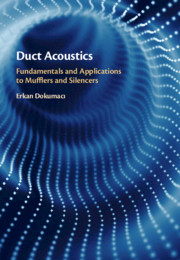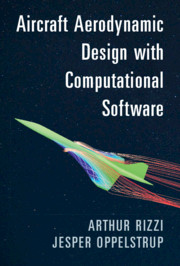Refine search
Actions for selected content:
5471 results in Thermal-fluids engineering
Preface
-
- Book:
- Duct Acoustics
- Published online:
- 11 May 2021
- Print publication:
- 13 May 2021, pp xvii-xx
-
- Chapter
- Export citation
4 - Transmission of One-Dimensional Waves in Coupled Ducts
-
- Book:
- Duct Acoustics
- Published online:
- 11 May 2021
- Print publication:
- 13 May 2021, pp 125-172
-
- Chapter
- Export citation
Dedication
-
- Book:
- Duct Acoustics
- Published online:
- 11 May 2021
- Print publication:
- 13 May 2021, pp v-vi
-
- Chapter
- Export citation
Index
-
- Book:
- Duct Acoustics
- Published online:
- 11 May 2021
- Print publication:
- 13 May 2021, pp 579-586
-
- Chapter
- Export citation

Duct Acoustics
- Fundamentals and Applications to Mufflers and Silencers
-
- Published online:
- 11 May 2021
- Print publication:
- 13 May 2021

Aircraft Aerodynamic Design with Computational Software
-
- Published online:
- 30 April 2021
- Print publication:
- 20 May 2021
12 - Diffuser Design
-
- Book:
- Radial Flow Turbocompressors
- Published online:
- 08 July 2021
- Print publication:
- 29 April 2021, pp 405-442
-
- Chapter
- Export citation
Index
-
- Book:
- Radial Flow Turbocompressors
- Published online:
- 08 July 2021
- Print publication:
- 29 April 2021, pp 752-760
-
- Chapter
- Export citation
6 - Gas Dynamics
-
- Book:
- Radial Flow Turbocompressors
- Published online:
- 08 July 2021
- Print publication:
- 29 April 2021, pp 191-209
-
- Chapter
- Export citation
5 - Fluid Mechanics
-
- Book:
- Radial Flow Turbocompressors
- Published online:
- 08 July 2021
- Print publication:
- 29 April 2021, pp 135-190
-
- Chapter
- Export citation
Copyright page
-
- Book:
- Radial Flow Turbocompressors
- Published online:
- 08 July 2021
- Print publication:
- 29 April 2021, pp iv-iv
-
- Chapter
- Export citation
Conventions and Nomenclature
-
- Book:
- Radial Flow Turbocompressors
- Published online:
- 08 July 2021
- Print publication:
- 29 April 2021, pp xxi-xxviii
-
- Chapter
- Export citation
2 - Energy Transfer
-
- Book:
- Radial Flow Turbocompressors
- Published online:
- 08 July 2021
- Print publication:
- 29 April 2021, pp 44-86
-
- Chapter
- Export citation
17 - Compressor Instability and Control
-
- Book:
- Radial Flow Turbocompressors
- Published online:
- 08 July 2021
- Print publication:
- 29 April 2021, pp 565-600
-
- Chapter
- Export citation
Credits
-
- Book:
- Radial Flow Turbocompressors
- Published online:
- 08 July 2021
- Print publication:
- 29 April 2021, pp xii-xii
-
- Chapter
- Export citation
11 - Impeller Design
-
- Book:
- Radial Flow Turbocompressors
- Published online:
- 08 July 2021
- Print publication:
- 29 April 2021, pp 338-404
-
- Chapter
- Export citation
4 - Efficiency Definitions for Compressors
-
- Book:
- Radial Flow Turbocompressors
- Published online:
- 08 July 2021
- Print publication:
- 29 April 2021, pp 106-134
-
- Chapter
- Export citation
20 - Development and Testing
-
- Book:
- Radial Flow Turbocompressors
- Published online:
- 08 July 2021
- Print publication:
- 29 April 2021, pp 688-714
-
- Chapter
- Export citation
18 - Maps and Matching
-
- Book:
- Radial Flow Turbocompressors
- Published online:
- 08 July 2021
- Print publication:
- 29 April 2021, pp 601-642
-
- Chapter
- Export citation
15 - Throughflow Code for Radial Compressors
-
- Book:
- Radial Flow Turbocompressors
- Published online:
- 08 July 2021
- Print publication:
- 29 April 2021, pp 480-527
-
- Chapter
- Export citation
